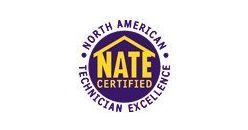With the right HVAC system, you can enjoy a comfortable climate inside your home or office no matter what the season! Echols Heating & AC provides comprehensive heating and AC services throughout Akron, OH, Summit County and surrounding areas of Northeast Ohio. We can install, repair, and maintain all types of heating and air conditioning systems, including furnaces (gas & propane), air conditioners, heat pumps, geothermal units, boilers, and many others. Our aim is to ensure your comfort for the most reasonable price possible. Contact us for prompt, professional service today.
FAQ
What is the most efficient setback for my programmable thermostat?
Programmable thermostats usually have four pre-programmed settings to regulate your home's temperature and deliver savings without sacrificing comfort. You can achieve significant savings by using those settings or adjusting them as appropriate. However, these rules change for heat pumps and alternative systems such as geothermal units. Most modern programmable thermostats have smart settings for these alternative systems.
To save money, use a program that automatically reduces heating and cooling in your home at off-peak times. A programmable thermostat calculator can tell you how much you can save with setback temperatures. The average household spends more than $2,000 a year on energy bills, with heating and cooling making up just over half that figure. You can save about $180 a year by properly setting your programmable thermostats and maintaining those settings.
How often do I need to tune and clean my furnace?
Our team and the manufacturers recommend annual checks on your equipment to ensure proper operation, filtration, and safety. All equipment needs to be checked for safety and cleaned routinely.
My throat and nose get very dry at night—is there anything I can do?
Installing a whole-house humidifier can help with this problem. It can also reduce static in the house and make your home more comfortable. Maintaining proper relative humidity is also important for wood trim and furniture in the home.
How often should I change my filters in the furnace?
If you have a standard disposable filter, you should change it monthly. If you have an electronic filter, it must be cleaned monthly for maximum efficiency. If you have an enhanced filter media air cleaner (such as an Aprilaire Spacegard), the manufacturer recommends every 6-12 months, depending on your home.
Why should I buy a high-efficiency furnace?
The cost of operation will be less expensive than a lower-efficiency furnace. Some newer furnaces also feature options that can help maintain more consistent comfort throughout your home.
What is Carbon Monoxide (CO)?
CO is produced by the incomplete combustion of fuels. It is odorless, colorless, and very toxic. All appliances that burn fuel can produce carbon monoxide. Carbon monoxide can result from improperly vented or malfunctioning combustion appliances such as furnaces, stoves, and water heaters. We recommend installing low-level carbon monoxide detectors on each floor of your home, and especially near bedrooms.

CALL (234) 248-2777 FOR FOR ALL OF YOUR HVAC NEEDS!










